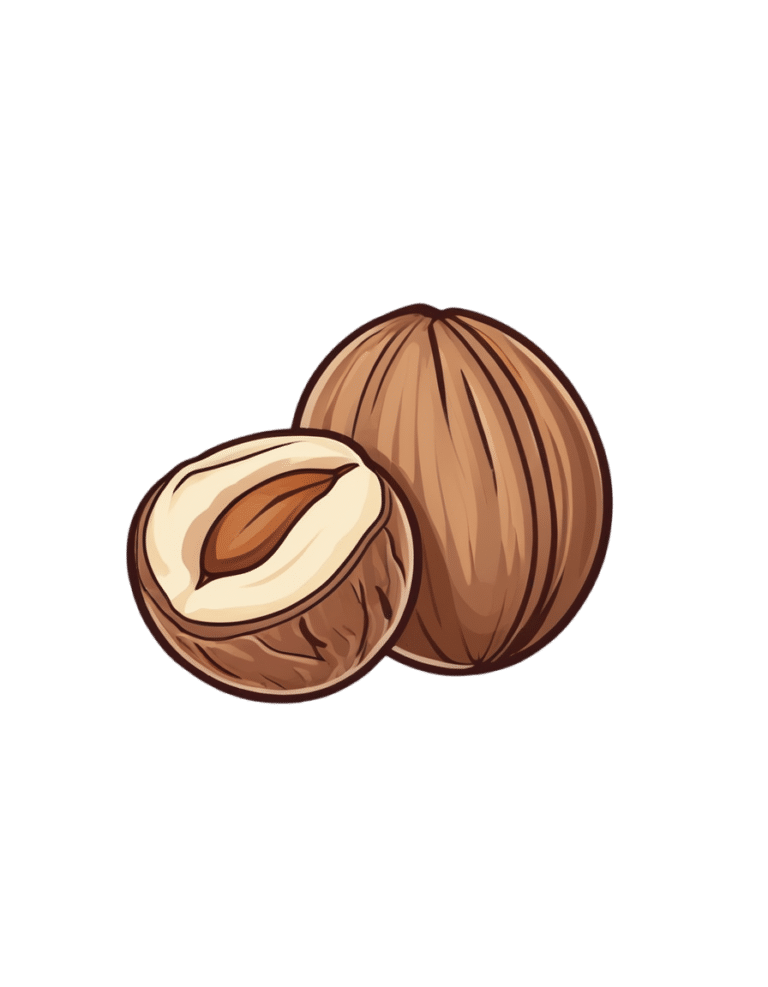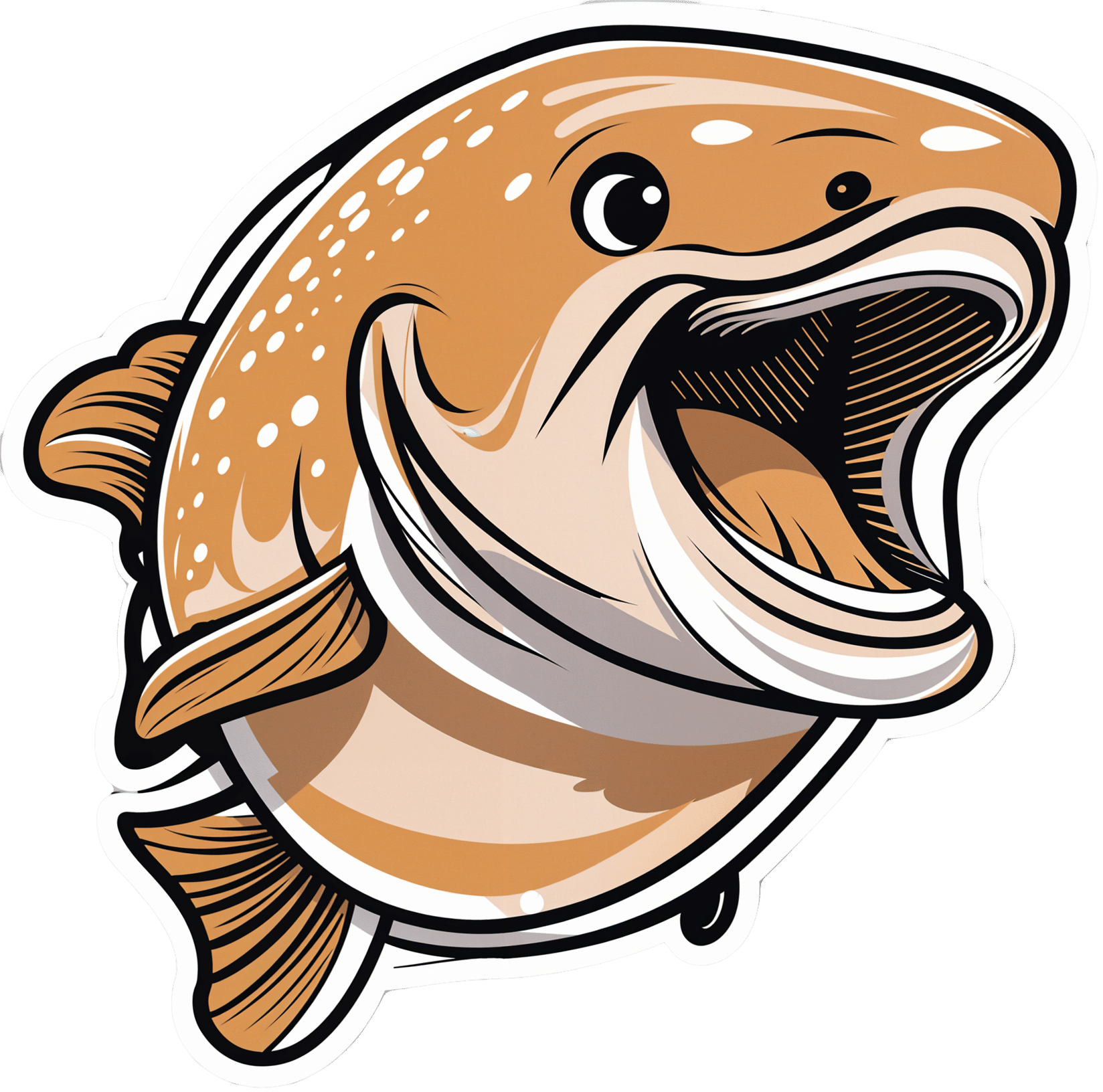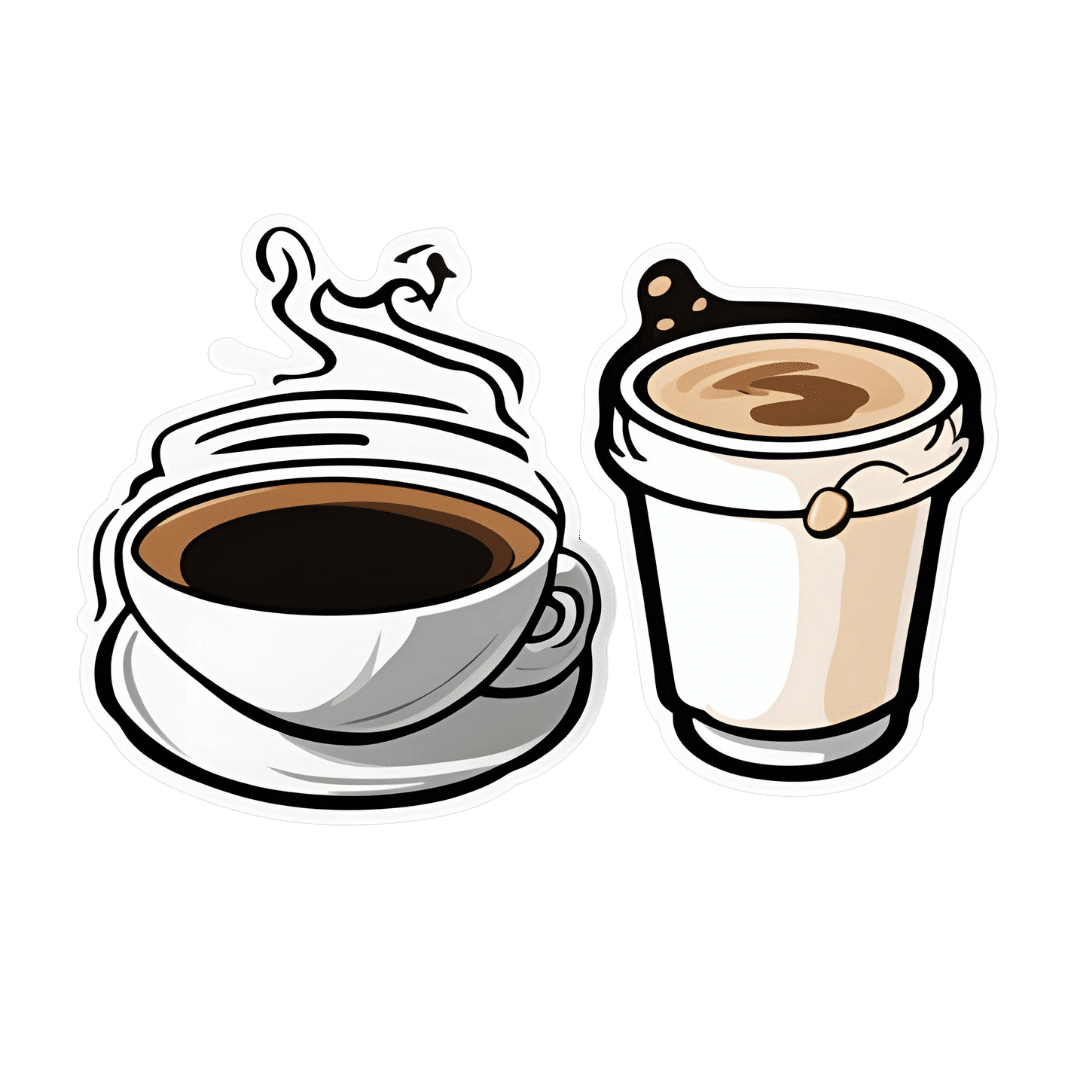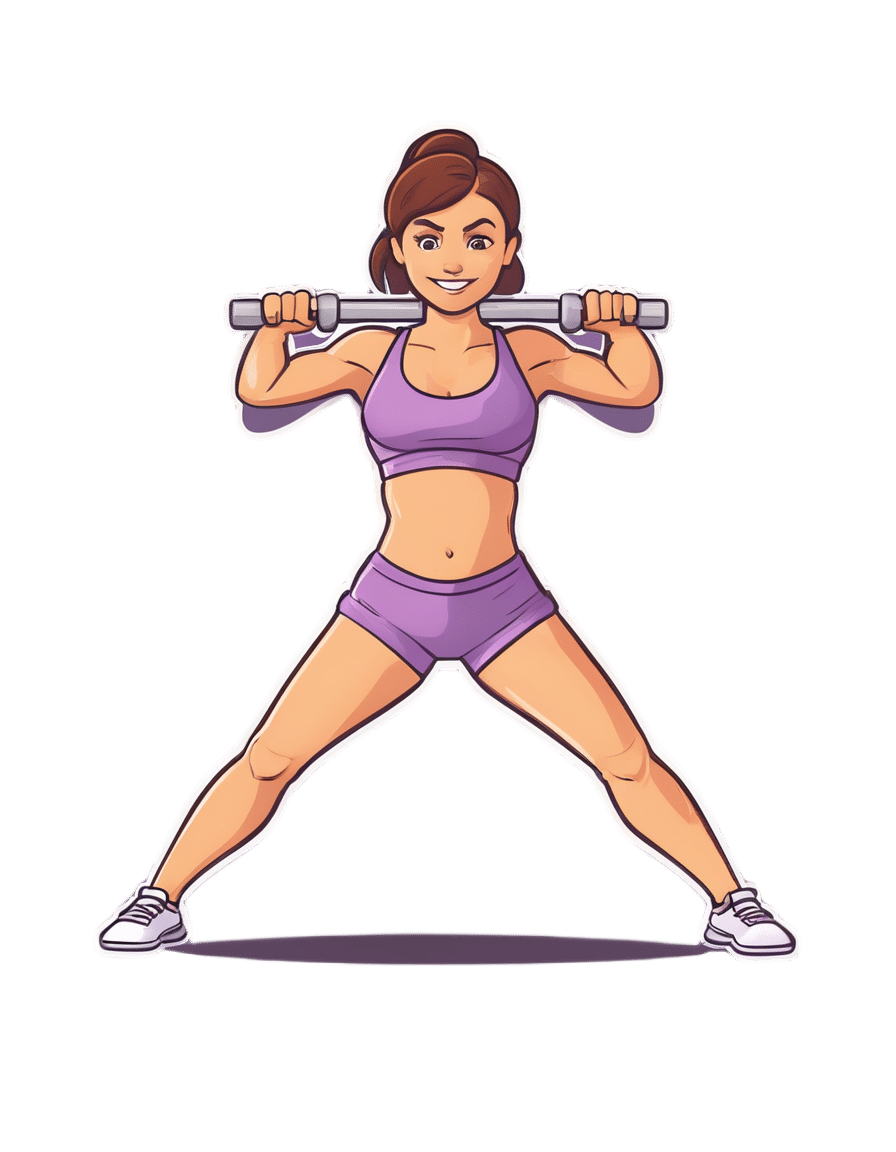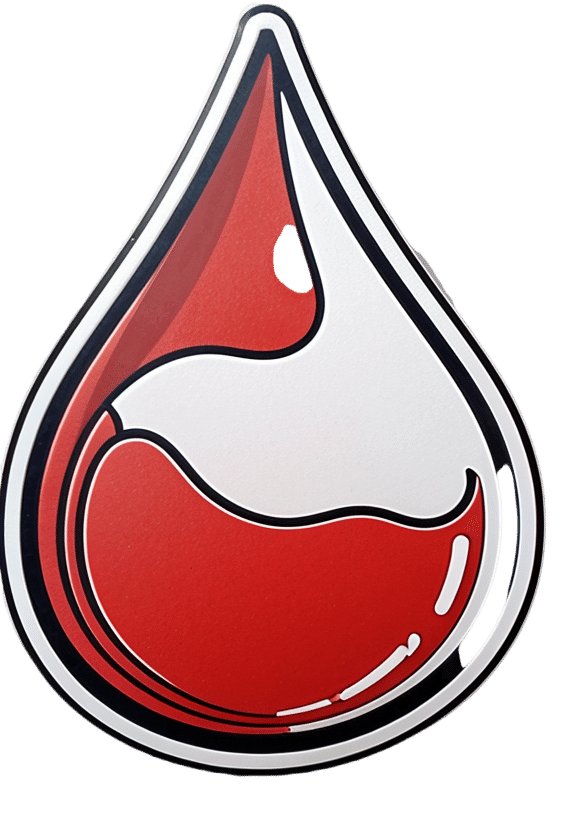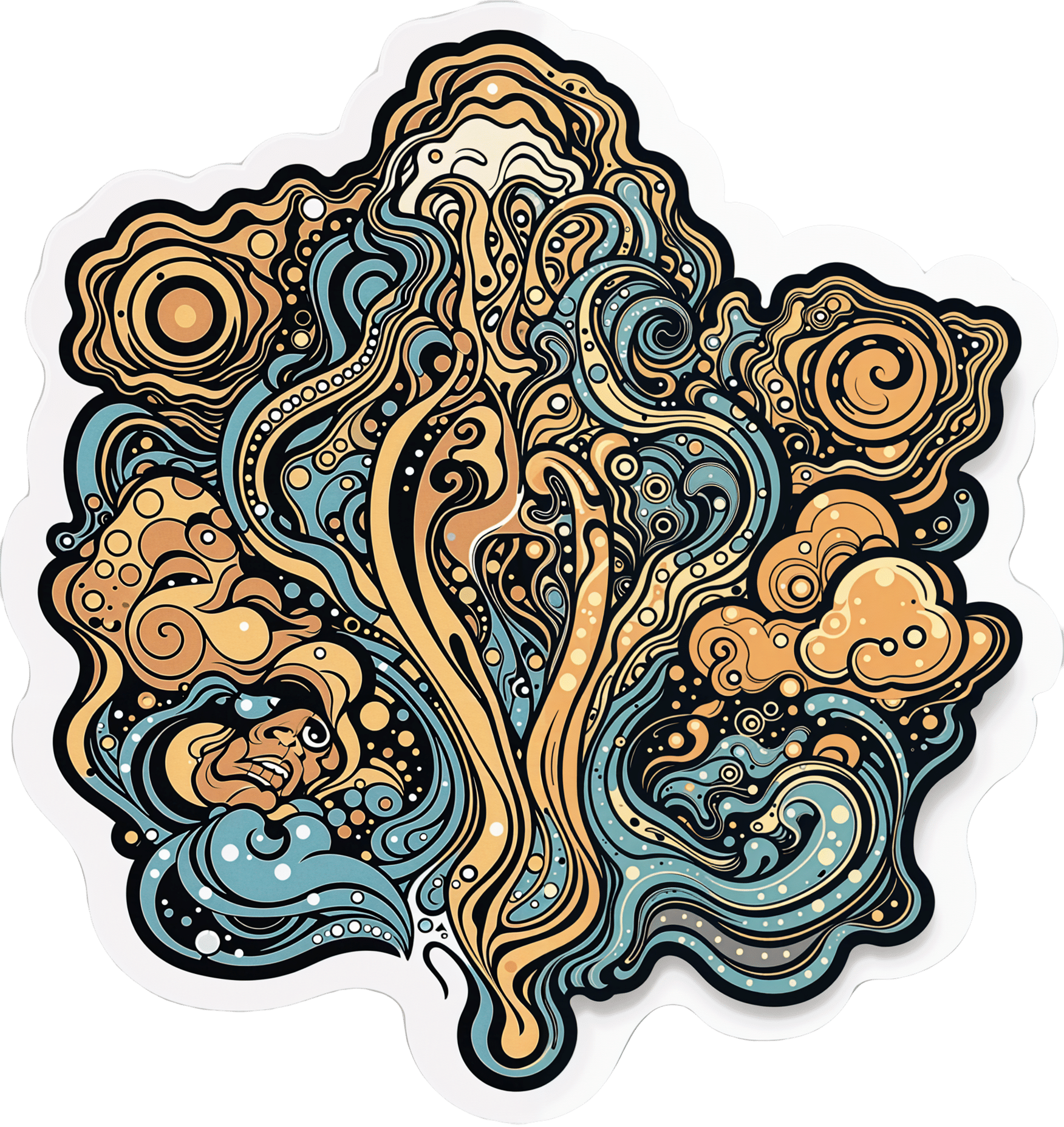
Reporting on psychedelics research or legislation? Proceed with caution
10almonds is reader-supported. We may, at no cost to you, receive a portion of sales if you purchase a product through a link in this article.
More cities and states are introducing bills to decriminalize and regulate access to psychedelic drugs, which could potentially become another option to treat mental health conditions and substance use disorders. But the substances remain illegal under U.S. federal law and scientific evidence about their effectiveness is still far from conclusive.
This month alone, California lawmakers introduced a bill to allow people 21 and older to consume psychedelic mushrooms under medical supervision. In Massachusetts, lawmakers are working on a bill that would legalize psilocybin, the active ingredient of psychedelic mushrooms. And Arizona legislators have also introduced a bill that would make psychedelic mushrooms available as a mental health treatment option.
Last December, Congress passed legislation that included funding for psychedelic clinical trials for active-duty service members. And in January this year, the Department of Veterans Affairs announced that it will begin funding research on MDMA, also known as ecstasy, and psilocybin, to treat veterans with post-traumatic stress disorder and depression. This is the first time since the 1960s that the VA is funding research on such compounds, according to the department.
The rise of proposed and passed legislation in recent years necessitates more journalistic coverage. But it’s important for journalists to go beyond what the bills and lawmakers say and include research studies about psychedelics and note the limitations of those studies.
Major medical organizations, including the American Psychiatric Association, have not yet endorsed psychedelics to treat psychiatric disorders, except in clinical trials, due to inadequate scientific evidence.
The authors of a 2023 study published in the journal Therapeutic Advances in Psychopharmacology, also advise “strong caution” regarding the hype around the potential medical use of psychedelics. “There is not enough robust evidence to draw any firm conclusions about the safety and efficacy of psychedelic therapy,” they write.
Scientists are still trying to better understand how psychedelics work, what’s the best dose for treating different mental health conditions and how to reduce the risk of potential side effects such as intense emotional experiences or increased heart rate and blood pressure, the authors of a February 2024 study published in the journal Progress in Neuro-Psychopharmacology and Biological Psychiatry write.
In a 2022 study published in JAMA Psychiatry, Dr. Joshua Siegel and his colleagues at Washington University in St. Louis write that while legislative reform for psychedelic drugs is moving forward rapidly, several issues have not been addressed, including:
- A mechanism for verifying the chemical content of drugs that are obtained from outside the medical establishment.
- Licensure and training criteria for practitioners who wish to provide psychedelic treatment.
- Clinical and billing infrastructure.
- Assessing potential interactions with other drugs.
- How the drugs should be used in populations such as youths, older adults and pregnant people.
“Despite the relative rapidity with which some have embraced psychedelics as legitimate medical treatments, critical questions about the mechanism of action, dose and dose frequency, durability of response to repeated treatments, drug-drug interactions, and the role that psychotherapy plays in therapeutic efficacy remain unanswered,” Siegel and colleagues write.
What are psychedelics?
Psychedelics are among the oldest class of mind-altering substances, used by humans for thousands of years in traditional or religious rituals.
In 2021, 74 million people 12 years and older reported using hallucinogens, according to the National Survey on Drug Use and Health.
The terms “psychedelics” and “hallucinogens” are used interchangeably in public discourse, but scientifically, hallucinogens fall into three groups based on chemical structure and mechanism of action, according to NIH’s National Institute on Drug Abuse:
- Psychedelic drugs, also called “classic psychedelics” or simply “psychedelics,” mainly affect the way the brain processes serotonin, a chemical that carries messages between nerve cells in the brain and the body. These drugs can bring on vivid visions and affect a person’s sense of self, according to NIDA. Drugs in this category include:
- Psilocybin is the active ingredient in psychedelic mushrooms, also known as “magic” mushrooms or shrooms. It’s a Schedule 1 drug in the U.S. under the Controlled Substances Act, which means it has a high potential for abuse and has no accepted medical use. However, some states have decriminalized it, according to NIDA. The drug has also been given the Breakthrough Therapy designation from the FDA, a process to speed up the development and review of drugs, for the treatment of major depressive disorder.
- LSD, or lysergic acid diethylamide, is a synthetic chemical made from a fungus that infects rye. It’s a Schedule 1 drug.
- DMT, or dimethyltryptamine, found in certain plants native to the Amazon rainforest, has been used in religious practices and rituals. The plants are sometimes used to make a tea called ayahuasca. DMT can also be made in the lab as a white powder. DMT is generally smoked or consumed in brews like ayahuasca. It’s a Schedule 1 drug.
- Mescaline, a chemical compound found in a small cactus called peyote, has been used by Indigenous people in northern Mexico and the southwestern U.S. in religious rituals. Mescaline can also be produced in the lab. Mescaline and peyote are Schedule 1 drugs.
- Dissociative drugs affect how the brain processes glutamate, an abundant chemical released by nerve cells in the brain that plays an important role in learning and memory. These drugs can make people feel disconnected from their bodies and surroundings. Drugs in this category include:
- PCP, or phencyclidine, was developed in the 1950s as an injectable anesthetic but was discontinued because patients became agitated and delusional. Today it is an illegal street drug. It’s a Schedule 2 drug, which means it has a high potential for abuse, but lower compared to Schedule 1 drugs.
- Ketamine, a drug developed in the 1960s and used as an anesthetic in the Vietnam War, is approved by the FDA as an anesthetic. It has been shown to play a role in pain management and treatment of depression. It is also illegally used for its hallucinogenic effects. It is a Schedule 3 drug, which means it has a moderate to low potential for physical and psychological dependence. A chemically-similar drug called esketamine is approved by the FDA for the treatment of depression that doesn’t respond to standard treatment.
- Other hallucinogens, which affect different brain functions and can cause psychedelic and potentially dissociative effects, include:
- MDMA, or ecstasy, is a synthetic drug that’s a stimulant and hallucinogen. It is a Schedule 1 drug. It has been given the Breakthrough Therapy designation from the FDA for the treatment of PTSD.
- Salvia is an herb in the mint family that has hallucinogenic effects. It is not a federally controlled drug, but it is controlled in some states, according to the DEA.
- Ibogaine is derived from the root bark of a West African shrub and is a stimulant and hallucinogen. It is a Schedule 1 drug.
Research on psychedelics
There was a wave of studies on psychedelics, particularly LSD, in the 1950s and 1960s, but they came to a halt when the U.S. declared a “War on Drugs” in 1971 and tightened pharmaceutical regulations. There was little research activity until the early 1990s when studies on drugs such as MDMA and DMT began to emerge.
In 2006, researchers at Johns Hopkins University published a seminal double-blind study in which two-thirds of participants — who had never taken psychedelics previously — said their psychedelic sessions were among the most meaningful experiences of their lives.
“These studies, among others, renewed scientific interest in psychedelics and, accordingly, research into their effects has continued to grow since,” Jacob S. Aday and colleagues write in a 2019 study published in Drug Science, Policy and Law.
In their paper, Aday and colleagues argue that 2018 may be remembered as the true turning point in psychedelic research due to “advances within science, increased public interest, and regulatory changes,” such as psilocybin receiving the “breakthrough therapy” status from the FDA.
Today, there are numerous ongoing clinical trials on the therapeutic potential of psychedelics for different conditions, including substance use disorders and mental health conditions such as depression, anxiety and post-traumatic stress disorder.
Given the growing number of studies on psychedelics, the Food and Drug Administration issued a draft guidance in June 2023 for clinical trials with psychedelic drugs, aiming to help researchers design studies that will yield more reliable results for drug development.
The systematic reviews highlighted below show that there’s a lack of robust study designs in many psychedelic clinical trials. Some have small sample sizes. Some include participants who have used psychedelics before, so when they participate in a randomized controlled clinical trial, they know whether they are receiving psychedelic treatment or a placebo. Or, some include participants who may have certain expectations due to positive coverage in the lay media, hence creating bias in the results.
If you’re covering a study about psychedelics…
It’s important for journalists to pay close attention to study design and speak with an expert who is not involved in the study.
In a February 2024 blog post from Harvard Law School’s Petrie-Flom Center, Leiden University professors Eiko I. Fried and Michiel van Elk share several challenges in psychedelic research:
- “Conclusions are dramatically overstated in many studies. This ranges from conclusions in the results sections, abstracts, and even titles of papers not consistent with the reported results.”
- “There is emerging evidence that adverse events resulting from psychedelic substances are both common and underreported.”
- Some studies don’t have control groups, which can create problems for interpreting results, “because treatments like psychedelics need to be compared against a placebo or other treatment to conclude that they work beyond the placebo effect or already existing, readily available treatments.”
- “Participants in psychedelic studies usually know if they are in the treatment or control group, which artificially increases the apparent efficacies of psychedelics in clinical studies.”
- Small sample sizes can affect the statistical power and generalizability of the findings. “Small samples also mean that results are not representative. For example, participants with severe or comorbid mental health problems are commonly excluded from psychedelic studies, and therefore results may look better in these studies than in real-world psychiatric settings.”
- Many studies do not include long-term follow-ups of participants. “Studying how these people are feeling a few days or weeks after they receive treatment is not sufficient to establish that they are indeed cured from depression.”
Fried and van Elk also have a useful checklist for assessing the quality and scientific rigor of psychedelic research in their 2023 study “History Repeating: Guidelines to Address Common Problems in Psychedelic Science,” published in the journal Therapeutic Advances in Psychopharmacology.
Journalists should also remind their audiences that the drugs are still illegal under federal law and can pose a danger to health.
In California, the number of emergency room visits involving the use of hallucinogens increased by 54% between 2016 and 2022, according to a January 2024 study published in Addiction. Meanwhile, the law enforcement seizure of psychedelic mushrooms has risen dramatically, increasing nearly four-fold between 2017 and 2022, according to a February 2024 study published in the journal Drug and Alcohol Dependence.
Below, we have curated and summarized five recent studies, mostly systematic reviews and meta-analyses, which examine various aspects of psychedelic drugs, including legislative reform; long-term effects; efficacy and safety for the treatment of anxiety, depression and PTSD; and participation of older adults in clinical trials. The research summaries are followed by recommended reading.
Research roundup
Psychedelic Drug Legislative Reform and Legalization in the US
Joshua S. Siegel, James E. Daily, Demetrius A. Perry and Ginger E. Nicol. JAMA Psychiatry, December 2022.
The study: Most psychedelics are Schedule I drugs federally, but state legislative reforms are changing the prospects of the drugs’ availability for treatment and their illegal status. For a better understanding of the legislative reform landscape around Schedule I psychedelic drugs, researchers collected all bills and ballot initiatives related to psychedelic drugs that were introduced into state legislatures between 2019 and September 2022. They used publicly available sources, including BillTrack50, Ballotpedia and LexisNexis.
The findings: In total, 25 states considered 74 bills, although the bills varied widely in their framework. A majority proposed decriminalization but only a few would require medical oversight and some would not even require training or licensure, the authors write. Ten of those bills became law in seven states — Colorado, Connecticut, Hawaii, New Jersey, Oregon, Texas and Washington. As of August 1, 2022, 32 bills were dead and 32 remained active.
The majority of the bills — 67 of them — referred to psilocybin; 27 included both psilocybin and MDMA; 43 proposed decriminalization of psychedelic drugs.
To predict the future legalization of psychedelics, the authors also created two models based on existing medical and recreational marijuana reform. Using 2020 as the year of the first psychedelic decriminalization in Oregon, their models predict that 26 states will legalize psychedelics between 2033 and 2037.
In the authors’ words: “Despite the relative rapidity with which some have embraced psychedelics as legitimate medical treatments, critical questions about the mechanism of action, dosing and dose frequency, durability of response to repeated treatments, drug-drug interactions, and the role psychotherapy plays in therapeutic efficacy remain unanswered. This last point is critical, as a significant safety concern associated with drugs like psilocybin, MDMA, or LSD is the suggestibility and vulnerability of the patient while under the influence of the drug. Thus, training and clinical oversight is necessary to ensure safety and also therapeutic efficacy for this divergent class of treatments.”
Who Are You After Psychedelics? A Systematic Review and a Meta-Analysis of the Magnitude of Long-Term Effects of Serotonergic Psychedelics on Cognition/Creativity, Emotional Processing and Personality
Ivana Solaja, et al. Neuroscience & Behavioral Reviews, March 2024.
The study: Many anecdotal reports and observational studies have reported that psychedelics, even at microdoses, which are roughly one-tenth of a typical recreational dose, may enhance certain aspects of cognition and/or creativity, including coming up with new, useful ideas. Cognition is a “range of intellectual functions and processes involved in our ability to perceive, process, comprehend, store and react to information,” the authors explain. There are established relationships between impaired cognitive functioning and mental health disorders.
Due to limitations such as a lack of rigorous study designs, various populations in the studies and lack of documented dosage, it’s difficult to draw any conclusions about changes that last at least one week as a result of consuming psychedelics.
The authors screened 821 studies and based on the criteria they had set, found 10 to be eligible for the review and meta-analysis. The drugs in the studies include psilocybin, ayahuasca and LSD.
The findings: Overall, there was little evidence that these psychedelics have lasting effects on creativity. Also, there was not sufficient evidence to determine if this group of psychedelics enhances cognition and creativity in healthy populations or improves cognitive deficits in the study populations.
Pooled data from three studies showed lasting improvement in emotional processing — perceiving, expressing and managing emotions.
The studies offered little evidence suggesting lasting effects of psychedelics on personality traits.
In the authors’ words: “Results from this study showed very limited evidence for any lasting beneficial effects across these three psychological constructs. However, preliminary meta-analytic evidence suggested that these drugs may have the potential to cause lasting improvement in emotional recognition time. Future studies investigating these constructs should employ larger sample sizes, better control conditions, standardized and validated measures and longer-term follow-ups.”
The Impact of Psychedelics on Patients with Alcohol Use Disorder: A Systematic Review with Meta-Analysis
Dakota Sicignano, et al. Current Medical Research and Opinion, December 2023.
The study: Researchers are exploring the psychedelics’ potential for the treatment of alcohol use disorder, which affected nearly 30 million Americans in 2022. The authors of this study searched PubMed from 1960 to September 2023 for studies on the use of psychedelics to treat alcohol use disorder. Out of 174 English-language studies, they selected six studies that met the criteria for their analysis.
The findings: LSD and psilocybin are promising therapies for alcohol use disorder, the authors report. However, five of the six trials were conducted in the 1960s and 1970s and may not reflect the current treatment views. Also, four of the six studies included patients who had used psychedelics before participating in the study, increasing the risk of bias.
In the authors’ words: “Despite the existence of several clinical trials showing relatively consistent benefits of psychedelic therapy in treating alcohol use disorder, there are important limitations in the dataset that must be appreciated and that preclude a conclusive determination of its value for patient care at this time.”
Older Adults in Psychedelic-Assisted Therapy Trials: A Systematic Review
Lisa Bouchet, et al. Journal of Psychopharmacology, January 2024.
The study: People 65 years and older have been underrepresented in clinical trials involving psychedelics, including the use of psilocybin for the treatment of depression and anxiety. About 15% of adults older than 60 suffer from mental health issues, the authors note. They wanted to quantify the prevalence of older adults enrolled in psychedelic clinical trials and explore safety data in this population. They searched for English-language studies in peer-reviewed journals from January 1950 to September 2023. Of 4,376 studies, the authors selected 36. The studies involved psilocybin, MDMA, LSD, ayahuasca, and DPT (dipropyltryptamine), which is a less-studied synthetic hallucinogen.
The findings: Of the 1,400 patients participating in the selected studies, only 19 were 65 and older. Eighteen received psychedelics for distress related to cancer or other life-threatening illnesses. In a trial of MDMA-assisted therapy for PTSD, only one older adult was included. Adverse reactions to the drugs among older patients, including heart and gastrointestinal issues were resolved within two days and didn’t have a long-lasting impact.
In the authors’ words: “Although existing data in older adults is limited, it does provide preliminary evidence for the safety and tolerability of [psychedelic-assisted therapy] in older patients, and as such, should be more rigorously studied in future clinical trials.”
Efficacy and Safety of Four Psychedelic-Assisted Therapies for Adults with Symptoms of Depression, Anxiety, and Posttraumatic Stress Disorder: A Systematic Review and Meta-Analysis
Anees Bahji, Isis Lunsky, Gilmar Gutierrez and Gustavo Vazquez. Journal of Psychoactive Drugs, November 2023.
The study: LSD, psilocybin, ayahuasca and MDMA have been approved for clinical trials on psychedelic-assisted therapy of mental health conditions in Canada and the U.S. However, major medical associations, including the American Psychiatric Association, have argued that there is insufficient scientific evidence to endorse these drugs for treating mental health disorders. To better understand the current evidence, researchers reviewed 18 blinded, randomized controlled trials, spanning 2008 through 2023. Most studies were conducted in the U.S. or Switzerland.
The findings: The studies overall suggest preliminary evidence that psychedelic drugs are mostly well-tolerated. Psilocybin and MDMA therapies may offer relief from depression and PTSD symptoms for at least a year. Most studies also used therapy and psychological support along with psychedelics.
In the authors’ words: “Despite the promising evidence presented by our study and previous reviews in the field, the evidence base remains limited and underpowered. Long-term efficacy and safety data are lacking,” the authors write. “Future steps should encourage and highlight the need for more robust larger scale randomized controlled trials with longer follow-up periods, and efforts to address regulatory and legal barriers through the collaborations between researchers, healthcare professionals, regulatory bodies, and policymakers.”
This article first appeared on The Journalist’s Resource and is republished here under a Creative Commons license.
Don’t Forget…
Did you arrive here from our newsletter? Don’t forget to return to the email to continue learning!
Recommended
Learn to Age Gracefully
Join the 98k+ American women taking control of their health & aging with our 100% free (and fun!) daily emails:
-
Plant-Based Salmon Recipe
10almonds is reader-supported. We may, at no cost to you, receive a portion of sales if you purchase a product through a link in this article.
From Tofu to Salmon
This video (below) by SweetPotatoSoul isn’t just a recipe tutorial; it’s an inspiring journey into the world of vegan cooking, proving that reducing animal products doesn’t have to mean sacrificing flavor.
The key to her vegan salmon is the tofu. However, there’s a trick to the tofu – you have to press it.
Essentially, this involved putting some paper towel on either side of the tofu, and then placing a heavy object on top; this removes excess water and, more importantly, primes the tofu to absorb the flavor of your marinade!
(You’ll want to press the tofu for around 1 hour)
Find the rest of the recipe in the 12-minute video below!
Other Plant-Based Recipes
With there being so many benefits of cutting meat out of your diet, we’ve spent the time reviewing some of the top books on vegan recipes, including The Green Roasting Tin and The Vegan Instant Pot Cookbook. We hope you enjoy them as much as you’ll enjoy this recipe:
How was the video? If you’ve discovered any great videos yourself that you’d like to share with fellow 10almonds readers, then please do email them to us!
Share This Post
-
Coffee, From A Blood Sugar Management Perspective
10almonds is reader-supported. We may, at no cost to you, receive a portion of sales if you purchase a product through a link in this article.
Our favorite French biochemist (Jessie Inchauspé) is back, and this time, she’s tackling a topic near and dear to this writer’s heart: coffee ☕💕
What to consider
Depending on how you like your coffee, some or all of these may apply to you:
- Is coffee healthy? Coffee is generally healthy, reducing the risk of type 2 diabetes by improving fat burning in the liver and protecting beta cells in the pancreas.
- Does it spike blood sugars? Usually not so long as it’s black and unsweetened. Black coffee can cause small glucose spikes in some people due to stress-induced glucose release, but only if it contains caffeine.
- When is it best to drink it? Drinking coffee after breakfast, especially after a poor night’s sleep, can actually reduce glucose and insulin spikes.
- What about milk? All milks cause some glucose and insulin spikes. While oat milk is generally healthy, for blood sugar purposes unsweetened nut milks or even whole cow’s milk (but not skimmed; it needs the fat) are better options as they cause smaller spikes.
- What about sweetening? Adding sugar to coffee, especially on an empty stomach, obviously leads to large glucose spikes. Alternative sweeteners like stevia or sweet cinnamon are fine substitutes.
For more details on all of those things, plus why Kenyan coffee specifically may be the best for blood sugars, enjoy:
Click Here If The Embedded Video Doesn’t Load Automatically!
Want to learn more?
You might also like to read:
- The Bitter Truth About Coffee (or is it?)
- Caffeine: Cognitive Enhancer Or Brain-Wrecker?
- 10 Ways To Balance Blood Sugars
Take care!
Share This Post
-
Lost for words? Research shows art therapy brings benefits for mental health
10almonds is reader-supported. We may, at no cost to you, receive a portion of sales if you purchase a product through a link in this article.
Creating art for healing purposes dates back tens of thousands of years, to the practices of First Nations people around the world. Art therapy uses creative processes, primarily visual art such as painting, drawing or sculpture, with a view to improving physical health and emotional wellbeing.
When people face significant physical or mental ill-health, it can be challenging to put their experiences into words. Art therapists support people to explore and process overwhelming thoughts, feelings and experiences through a reflective art-making process. This is distinct from art classes, which often focus on technical aspects of the artwork, or the aesthetics of the final product.
Art therapy can be used to support treatment for a wide range of physical and mental health conditions. It has been linked to benefits including improved self-awareness, social connection and emotional regulation, while lowering levels of distress, anxiety and even pain scores.
In a study published this week in the Journal of Mental Health, we found art therapy was associated with positive outcomes for children and adolescents in a hospital-based mental health unit.
An option for those who can’t find the words
While a person’s engagement in talk therapies may sometimes be affected by the nature of their illness, verbal reflection is optional in art therapy.
Where possible, after finishing an artwork, a person can explore the meaning of their work with the art therapist, translating unspoken symbolic material into verbal reflection.
However, as the talking component is less central to the therapeutic process, art therapy is an accessible option for people who may not be able to find the words to describe their experiences.
Art therapy has supported improved mental health outcomes for people who have experienced trauma, people with eating disorders, schizophrenia and dementia, as well as children with autism.
Art therapy has also been linked to improved outcomes for people with a range of physical health conditions. These include lower levels of anxiety, depression and fatigue among people with cancer, enhanced psychological stability for patients with heart disease, and improved social connection among people who have experienced a traumatic brain injury.
Art therapy has been associated with improved mood and anxiety levels for patients in hospital, and lower pain, tiredness and depression among palliative care patients.
Studies suggest art therapy could support people with a range of health conditions. mojo cp/Shutterstock Our research
Mental ill-health, including among children and young people, presents a major challenge for our society. While most care takes place in the community, a small proportion of young people require care in hospital to ensure their safety.
In this environment, practices that place even greater restriction, such as seclusion or physical restraint, may be used briefly as a last resort to ensure immediate physical safety. However, these “restrictive practices” are associated with negative effects such as post-traumatic stress for patients and health professionals.
Worryingly, staff report a lack of alternatives to keep patients safe. However, the elimination of restrictive practices is a major aim of mental health services in Australia and internationally.
Our research looked at more than six years of data from a child and adolescent mental health hospital ward in Australia. We sought to determine whether there was a reduction in restrictive practices during the periods when art therapy was offered on the unit, compared to times when it was absent.
We found a clear association between the provision of art therapy and reduced frequency of seclusion, physical restraint and injection of sedatives on the unit.
We don’t know the precise reason for this. However, art therapy may have lessened levels of severe distress among patients, thereby reducing the risk they would harm themselves or others, and the likelihood of staff using restrictive practices to prevent this.
This artwork was described by the young person who made it as a dead tree with new growth, representing a sense of hope emerging as they started to move towards their recovery. Author provided That said, hospital admission involves multiple therapeutic interventions including talk-based therapies and medications. Confirming the effect of a therapeutic intervention requires controlled clinical trials where people are randomly assigned one treatment or another.
Although ours was an observational study, randomised controlled trials support the benefits of art therapy in youth mental health services. For instance, a 2011 hospital-based study showed reduced symptoms of post-traumatic stress disorder among adolescents randomised to trauma-focussed art therapy compared to a “control” arts and crafts group.
Artwork made by a young person during an art therapy session in an in-patient mental health unit. Author provided What do young people think?
In previous research we found art therapy was considered by adolescents in hospital-based mental health care to be the most helpful group therapy intervention compared to other talk-based therapy groups and creative activities.
In research not yet published, we’re speaking with young people to better understand their experiences of art therapy, and why it might reduce distress. One young person accessing art therapy in an acute mental health service shared:
[Art therapy] is a way of sort of letting out your emotions in a way that doesn’t involve being judged […] It let me release a lot of stuff that was bottling up and stuff that I couldn’t explain through words.
A promising area
The burgeoning research showing the benefits of art therapy for both physical and especially mental health highlights the value of creative and innovative approaches to treatment in health care.
There are opportunities to expand art therapy services in a range of health-care settings. Doing so would enable greater access to art therapy for people with a variety of physical and mental health conditions.
Sarah Versitano, Academic, Master of Art Therapy Program, Western Sydney University and Iain Perkes, Senior Lecturer, Child and Adolescent Psychiatry, UNSW Sydney
This article is republished from The Conversation under a Creative Commons license. Read the original article.
Share This Post
Related Posts
-
Healthy Mind In A Healthy Body
10almonds is reader-supported. We may, at no cost to you, receive a portion of sales if you purchase a product through a link in this article.
The 8-minute piece of music “Weightless” by Marconi was created scientifically to lower the heart rate and relax the listener. How did they do it? You can read the British Academy of Sound Therapy’s explanation of the methodology here, but important results of the study were:
- “Weightless” was able to induce greater relaxation levels than a massage (increase of 6%).
- “Weightless” also induced an 11% increase in relaxation over all other relaxing music tracks in the study.
- “Weightless” was also subjectively rated as more relaxing than any other music by all the participants.
Try it for yourself!
Click Here If The Embedded Video Doesn’t Load Automatically!
Isn’t that better? Whenever you’re ready, read on…
Today we’re going to share a technique for dealing with difficult emotions. The technique is used in Cognitive Behavioral Therapy (CBT), and Dialectical Behavior Therapy (DBT), and it’s called RAIN:
- Recognizing: ask yourself “what is it that I’m feeling?”, and put a name to it. It could be anger, despair, fear, frustration, anxiety, overwhelm etc.
- Accepting: “OK, so, I’m feeling ________”. There’s no point in denying it, or being defensive about it, these things won’t help you. For now, just accept it.
- Investigating: “Why am I feeling ________?” Maybe there is an obvious reason, maybe you need to dig for a reason—or dig deeper for the real reason. Most bad feelings are driven by some sort of fear or insecurity, so that can be a good avenue for examination. Important: your feelings may be rational or irrational. That’s fine. This is a time for investigating, not judging.
- Non-Identification: not making whatever it is you’re feeling into a part of you. Once you get too attached to “I am jealous”, “I am angry”, “I am sad” etc, it can be difficult to manage something that has become a part of your personality; you’ll defend your jealousy, anger, sadness etc rather than tackle it.
As a CBT tool, this is something you can do for yourself at any time. It won’t magically solve your problems, but it can stop you from spiralling into a state of crisis, and get you back on a more useful track.
As a DBT tool, to give this its full strength, ideally now you will communicate what you’re feeling, to somebody you trust, perhaps a partner or friend, for instance.
Humans are fundamentally social creatures, and we achieve our greatest strengths when we support each other—and that also means sometimes seeking and accepting support!
Do you have a good technique you’d like to share? Reply to this email and let us know!
Don’t Forget…
Did you arrive here from our newsletter? Don’t forget to return to the email to continue learning!
Learn to Age Gracefully
Join the 98k+ American women taking control of their health & aging with our 100% free (and fun!) daily emails:
-
Why are my muscles sore after exercise? Hint: it’s nothing to do with lactic acid
10almonds is reader-supported. We may, at no cost to you, receive a portion of sales if you purchase a product through a link in this article.
As many of us hit the gym or go for a run to recover from the silly season, you might notice a bit of extra muscle soreness.
This is especially true if it has been a while between workouts.
A common misunderstanding is that such soreness is due to lactic acid build-up in the muscles.
Research, however, shows lactic acid has nothing to do with it. The truth is far more interesting, but also a bit more complex.
It’s not lactic acid
We’ve known for decades that lactic acid has nothing to do with muscle soreness after exercise.
In fact, as one of us (Robert Andrew Robergs) has long argued, cells produce lactate, not lactic acid. This process actually opposes not causes the build-up of acid in the muscles and bloodstream.
Unfortunately, historical inertia means people still use the term “lactic acid” in relation to exercise.
Lactate doesn’t cause major problems for the muscles you use when you exercise. You’d probably be worse off without it due to other benefits to your working muscles.
Lactate isn’t the reason you’re sore a few days after upping your weights or exercising after a long break.
So, if it’s not lactic acid and it’s not lactate, what is causing all that muscle soreness?
Muscle pain during and after exercise
When you exercise, a lot of chemical reactions occur in your muscle cells. All these chemical reactions accumulate products and by-products which cause water to enter into the cells.
That causes the pressure inside and between muscle cells to increase.
This pressure, combined with the movement of molecules from the muscle cells can stimulate nerve endings and cause discomfort during exercise.
The pain and discomfort you sometimes feel hours to days after an unfamiliar type or amount of exercise has a different list of causes.
If you exercise beyond your usual level or routine, you can cause microscopic damage to your muscles and their connections to tendons.
Such damage causes the release of ions and other molecules from the muscles, causing localised swelling and stimulation of nerve endings.
This is sometimes known as “delayed onset muscle soreness” or DOMS.
While the damage occurs during the exercise, the resulting response to the injury builds over the next one to two days (longer if the damage is severe). This can sometimes cause pain and difficulty with normal movement.
The upshot
Research is clear; the discomfort from delayed onset muscle soreness has nothing to do with lactate or lactic acid.
The good news, though, is that your muscles adapt rapidly to the activity that would initially cause delayed onset muscle soreness.
So, assuming you don’t wait too long (more than roughly two weeks) before being active again, the next time you do the same activity there will be much less damage and discomfort.
If you have an exercise goal (such as doing a particular hike or completing a half-marathon), ensure it is realistic and that you can work up to it by training over several months.
Such training will gradually build the muscle adaptations necessary to prevent delayed onset muscle soreness. And being less wrecked by exercise makes it more enjoyable and more easy to stick to a routine or habit.
Finally, remove “lactic acid” from your exercise vocabulary. Its supposed role in muscle soreness is a myth that’s hung around far too long already.
Robert Andrew Robergs, Associate Professor – Exercise Physiology, Queensland University of Technology and Samuel L. Torrens, PhD Candidate, Queensland University of Technology
This article is republished from The Conversation under a Creative Commons license. Read the original article.
Don’t Forget…
Did you arrive here from our newsletter? Don’t forget to return to the email to continue learning!
Learn to Age Gracefully
Join the 98k+ American women taking control of their health & aging with our 100% free (and fun!) daily emails:
-
Stop Trying To Lose Weight (And Do This Instead)
10almonds is reader-supported. We may, at no cost to you, receive a portion of sales if you purchase a product through a link in this article.
“Lose weight” is a common goal of many people, and it’s especially a common goal handed down from medical authority figures, often as a manner of “kicking the can down the road” with regard to the doctor actually having to do some work. “Lose 20 pounds and then we’ll talk”, etc.
The thing is, it’s often not a very good or helpful goal… Even if it would be healthy for a given person to lose weight. Instead, biochemist Jessie Inchauspé argues, one should set a directly health-giving goal instead, and let any weight loss, if the body agrees it is appropriate, be a by-product of that
She recommends focusing on metabolic health, specifically, her own specialism is blood glucose maintenance. This is something that diabetics deal with (to one degree or another) every day, but it’s something whose importance should not be underestimated for non-diabetics too.
Keep our blood sugar levels healthy, she says, and a lot of the rest of good health will fall into place by itself—precisely because we’re not constantly sabotaging our body (first the pancreas and liver, then the rest of the body like dominoes).
To that end, she offers a multitude of “hacks” that really work.
Her magnum opus, “Glucose Revolution“, explains the science in great detail and does it very well! Not to be mistaken for her shorter, simpler, and entirely pragmatic “do this, then this”-style book, “The Glucose Goddess Method”, which is also great, but doesn’t go into the science more than absolutely necessary; it’s more for the “I’ll trust you; just tell me what I need to know” crowd.
In her own words:
Click Here If The Embedded Video Doesn’t Load Automatically!
Prefer text?
We’ve covered Inchauspé’s top 10 recommended hacks here:
10 Ways To Balance Blood Sugars
Enjoy!
Don’t Forget…
Did you arrive here from our newsletter? Don’t forget to return to the email to continue learning!
Learn to Age Gracefully
Join the 98k+ American women taking control of their health & aging with our 100% free (and fun!) daily emails:

